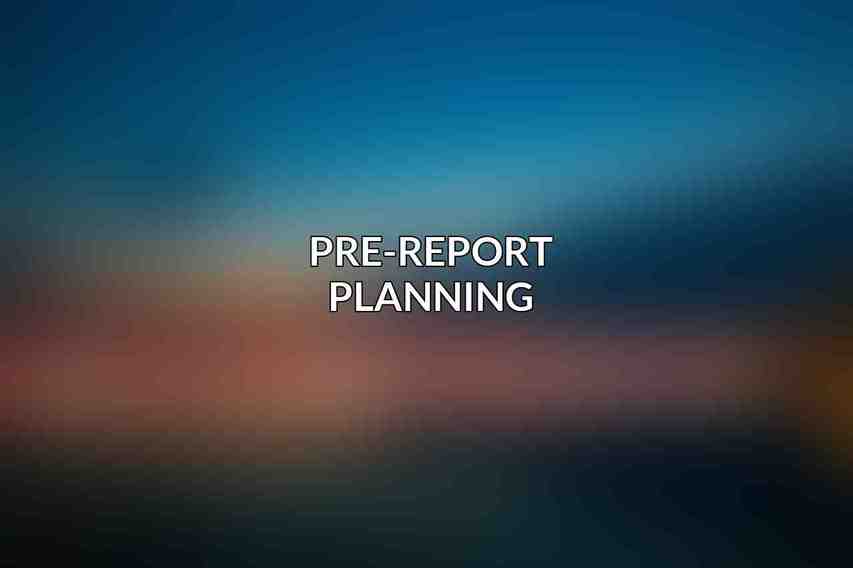Crafting effective email marketing reports is crucial in understanding the performance of email campaigns and making informed decisions to optimize future strategies. These reports provide valuable insights that help marketers gauge the success of their efforts, identify areas for improvement, and demonstrate the impact of email marketing on overall business goals. The data and analysis presented in these reports play a significant role in shaping future marketing strategies and investments.
One of the key benefits of well-designed email marketing reports is the ability to track and measure the effectiveness of campaigns accurately. By analyzing key metrics and performance indicators, marketers can assess the ROI of their email marketing initiatives and adjust their strategies accordingly. These reports also help in providing stakeholders with a clear view of the impact of email marketing activities on business outcomes, making it easier to justify marketing investments and secure resources for future campaigns.
The target audience for email marketing reports varies from internal stakeholders such as marketing teams, senior management, and sales departments to external partners and clients. These reports serve as a communication tool that provides a common understanding of campaign performance and helps align strategies across different functions within an organization.
Pre-Report Planning

Before diving into the creation of email marketing reports, it is essential to undertake thorough pre-report planning to ensure that the reports are aligned with business objectives and effectively measure performance. This phase involves several key steps:
- Define Report Objectives: Clearly outline what the report aims to achieve and what specific aspects of campaign performance will be evaluated.
- Identify Key Metrics and KPIs: Determine the key performance indicators that will be used to measure the success of email campaigns, such as open rates, click-through rates, conversion rates, and customer engagement metrics.
- Establish Reporting Frequency: Decide how often reports will be generated and distributed, whether it’s weekly, monthly, quarterly, or for specific campaigns.
- Determine Data Sources: Identify the sources from which data will be collected, including email service providers, CRM systems, and other relevant platforms.
This planning phase sets the foundation for creating comprehensive and valuable email marketing reports that provide actionable insights for decision-making.
Data Collection and Analysis
Effective email marketing reports rely heavily on accurate data collection and in-depth analysis to derive meaningful insights. This phase involves:
| Data Collection and Analysis Steps | Description |
|---|---|
| Data Sources | Utilize various sources such as email service providers and CRM systems to gather comprehensive campaign data. |
| Metrics and Measurement | Focus on key metrics like email opens, click-through rates, conversion rates, and revenue generated to assess campaign performance. |
| Time Periods for Analysis | Choose relevant time frames to analyze campaign data, such as weekly, monthly, or quarterly reports to track trends accurately. |
| Benchmarking for Performance Evaluation | Compare campaign performance against industry benchmarks and past campaign results to gauge success. |
Analyzing data effectively allows marketers to understand the impact of their email campaigns, identify trends, and make data-driven decisions to optimize future strategies.
Report Content and Format
The content and format of email marketing reports play a vital role in conveying insights effectively and engaging stakeholders. Here are key elements to include: Find more on Top Email Reporting Tools of the Year: Boost Your Marketing Strategy
- Executive Summary: Provide a high-level overview of key findings and insights to give stakeholders an immediate understanding of campaign performance.
- Campaign Overview: Detail the campaign goals, target audience, messaging, and objectives to provide context for the reported data.
- Performance Analysis: Present data on campaign performance, including key metrics, trends, and comparisons to previous campaigns or benchmarks.
- Campaign Attribution: Measure the impact of campaigns on various goals, such as revenue generation, lead generation, or brand awareness.
- Qualitative Feedback: Incorporate customer surveys, social media mentions, and other qualitative data to enrich the analysis with customer perspectives.
By organizing the report content effectively, marketers can ensure that stakeholders can easily digest and act on the insights provided.
Report Presentation

The visual appeal and narrative structure of email marketing reports significantly impact how well insights are communicated and understood. Consider the following aspects when designing report presentations:
- Visualizations: Use charts, graphs, infographics, and other visual elements to present data in a clear and engaging manner.
- Storytelling: Create a narrative that connects data points and findings to tell a compelling story about campaign performance and outcomes.
- Calls to Action (CTAs): Provide actionable recommendations for improving future campaigns based on the insights derived from the data.
- Formatting Considerations: Ensure the report is well-structured, consistent in formatting, and easy to navigate to enhance readability and comprehension.
A visually appealing and well-structured report presentation increases the likelihood of stakeholders engaging with and acting upon the insights provided.
Stay tuned for the continuation of the guide in the next response.
Frequently Asked Questions
What is the importance of crafting effective email marketing reports?
Crafting effective email marketing reports is crucial for evaluating the success of your email campaigns, identifying areas for improvement, and making data-driven decisions to enhance your marketing strategies.
How can I start crafting an email marketing report?
To start crafting an email marketing report, first define your key performance indicators (KPIs), gather relevant data from your email marketing platform, and organize the data into a clear and concise format for analysis.
What are some key metrics to include in an email marketing report?
Some key metrics to include in an email marketing report are open rates, click-through rates, conversion rates, unsubscribe rates, email deliverability, and revenue generated from email campaigns.
How often should I send email marketing reports?
It is recommended to send email marketing reports on a regular basis, such as weekly, bi-weekly, or monthly, depending on your email campaign frequency and business goals. You can find more information on Master Email Marketing with Our Guide to Email Analytics
What are some tips for interpreting and utilizing email marketing reports effectively?
Some tips for interpreting and utilizing email marketing reports effectively include segmenting your audience for targeted analysis, comparing performance metrics over time, A/B testing different email strategies, and leveraging insights to optimize future campaigns.

